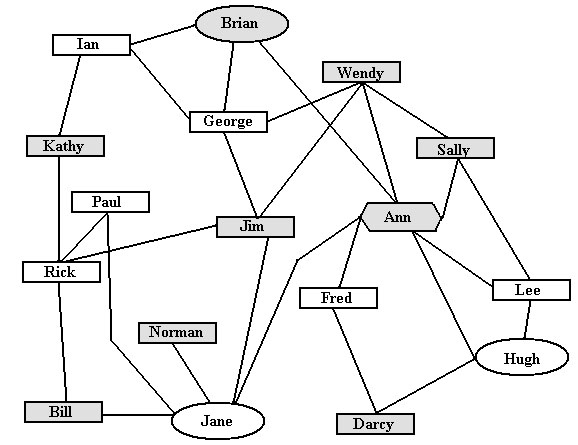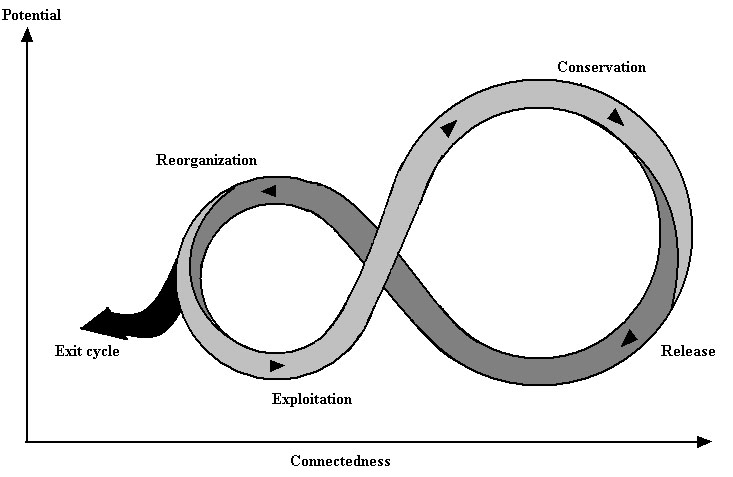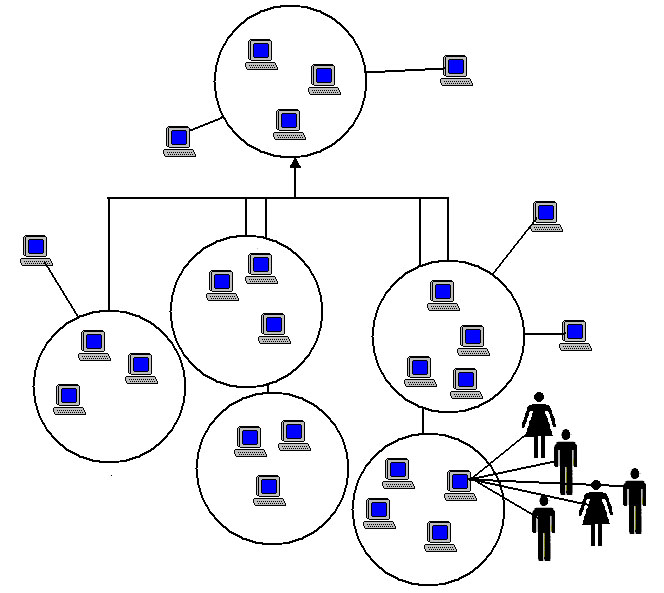|
|
Alan J. Thomson
B.Sc. DLSHTM M.Sc. Ph.D
Victoria, BC, Canada
email: ajthomson@AdaptiveKM.com






Knowledge Ecosystems
A knowledge ecosystem is a complex and many-faceted system of
- people
- institutions
- organizations
- technologies
- processes
in which knowledge is
- created
- interpreted
- distributed
- absorbed
- translated
- utilized
and where processes, interactions and activities have analogies with the science of Ecology (Thomson 2006, 2007).
Knowledge Ecosystem Analogies:
Each knowledge ecosystem approach focuses attention on issues for participants. For example, in the knowledge pyramid concept, issues include (Thomson 2007):
- Who decides on the language and concepts included in a summary?
- Who draws the inferences from the material presented?
- Who prepares the summary?
- Is the meeting recorded?
- Are transcripts verbatim?
- Do participants have an opportunity to see how their information is used and provide feedback before the summary is transmitted to the next level?
- Where does the summary go - to what individual or group and what are their roles and responsibilities?
- What response is expected from the next level and what topics will be addressed in the response?
- How transparent is the process; i.e., is it open to the public, or is only the report public, in whole or in part?
Participatory Planning
The Knowledge Ecosystem discussed by Thomson (2006, 2007) centered on the case of forest planning, where a plan:
- describes the process
- identifies participants
- identifies the temporal and spatial scope
- identifies needs, risks and information requirements
- defines land zones
- sets objectives and targets
- developes strategies for managing resources
- developes strategies for monitoring, communication, and opportunities for plan revision
Planning provides a future vision for land and resources, the steps to follow to achieve that vision, and the processes to determine the vision and steps. In forest planning there is a hierarchy of levels, from operational to strategic plans. Each level involves a different set of sectors, institutions and stakeholders.
Stakeholders have a range of knowledge, education, technological expertise and worldviews Outputs of a planning process are, by definition, plans; i.e.,
a recommendation for a specific course of action, with plans at one level often being constrained by requirements of higher level plans, as well as constraining lower levels. Planning processes may mandate stakeholder involvement.
Knowledge Ecosystem Concepts and Analogies:
Some Knowledge Ecosystem concepts from Thomson (2006, 2007) are illustrated below. Other concepts, not illustrated, include "sustainability", "resilience", "ecosystem restoration”, “information pollution" and "semantic drift". Thomson et al. (2007) describe a specific knowledge ecosystem.

Figure: The analogy to trophic levels (links in the chain of consumption) reflects the hierarchy of meetings in the planning process, forming a "knowledge pyramid". In the knowledge ecosystem analogy for forest planning, a synthesis takes place, with meetings and debate occurring at each transition from one level to another. The loop at right indicates knowledge flow in two directions, during synthesis and implementation.

Figure: Relationship webs showing the interactions of individuals and organizations are analogous with food webs (consumption relationships among species), and play a key role in decisions to adopt innovative ideas (Haggith et al. 2003). The different symbols or shadings could represent diffrent roles or competing groups or knowledge formats. See also Community of Practice networks (Norman and Huerta 2006)

Figure: A metapopulation is a group of subpopulations, and the analogy in a knowledge exosystem is the many local meetings that produce information for higher level processes.

Figure: The World Future Society partitions knowledge into six spheres: Biosphere, Sociosphere, Technosphere, Econosphere, Politisphere, and Futuresphere. Star diagrams based on this concept can be used to characterize the nature of a meeting, where distance along an axis may reflect the range of expertise included for that domain. The solid and dotted lines illustrate different types of meeting

Figure: Panarchy involves cycles of destruction and reorganization providing opportunities for reorganization of the structure and processes of a system. Thus, in a Knowledge Ecosystem, the individuals participating in meetings during the early stages may be different from those maintaining the process once it is well established.

Figure: A process based on virtual meetings or workshops, with subgroups linked to a plenary session (upper circle). Individuals can have full privileges (symbols inside circles), or only browse access (symbols outside circles). A group of individuals (bottom right) can come together at a common location, such as at a facilitated workshop, to collaborate on their interaction
References:
Haggith, M., R. Prabhu, C.J.P. Colfer, B. Ritchie, A. Thomson and H. Mudavanhu. 2003. Infectious Ideas: Modelling the Diffusion of Ideas across Social Networks. Small-scale Forest Economics, Management and Policy, 2(2): 225-239.
Norman, C.D., and T. Huerta. 2006. Knowledge transfer & exchange through social networks: building foundations for a community of practice within tobacco control. Implementation Science 2006, 1:20
Thomson, A.J. 2006. Adaptive Management of Knowledge Ecosystems. In: Proc Conf. "Sustainable forestry in theory and practice: recent advances in inventory and monitoring, statistics and modelling, information and knowledge management and policy science." University of Edinburgh, Edinburgh, UK. 5th - 8th April 2005. Gen. Tech. Rep. PNW-GTR-688. Portland, OR: U.S. Department of Agriculture, Forest Service, Pacific Northwest Research Station. [CD-ROM]
Thomson, A.J. 2007. How should we manage Knowledge Ecosystems? Using Adaptive Knowledge Management! Chapter 27 in: Reynolds, K., Thomson, A., Köhl, M., Shannon, S., Ray, D., and Rennolls, K. (eds.) 2007. Sustainable Forestry: From Monitoring and Modelling to Knowledge Management and Policy Science. CABI Publishing, Wallingford, UK: 461-479.
Thomson, A.J., B. Callan and J. Dennis. 2007. A knowledge ecosystem perspective on development of web-based technologies in support of sustainable forestry. Computers and Electronics in Agriculture 59: 39-55.
Thomson, A.J. 2012. Health in the Post-2015 Development Agenda Knowledge Ecosystem. Health in the Post-2015 Development Agenda, Thematic Consultation, Contributed paper.
|











